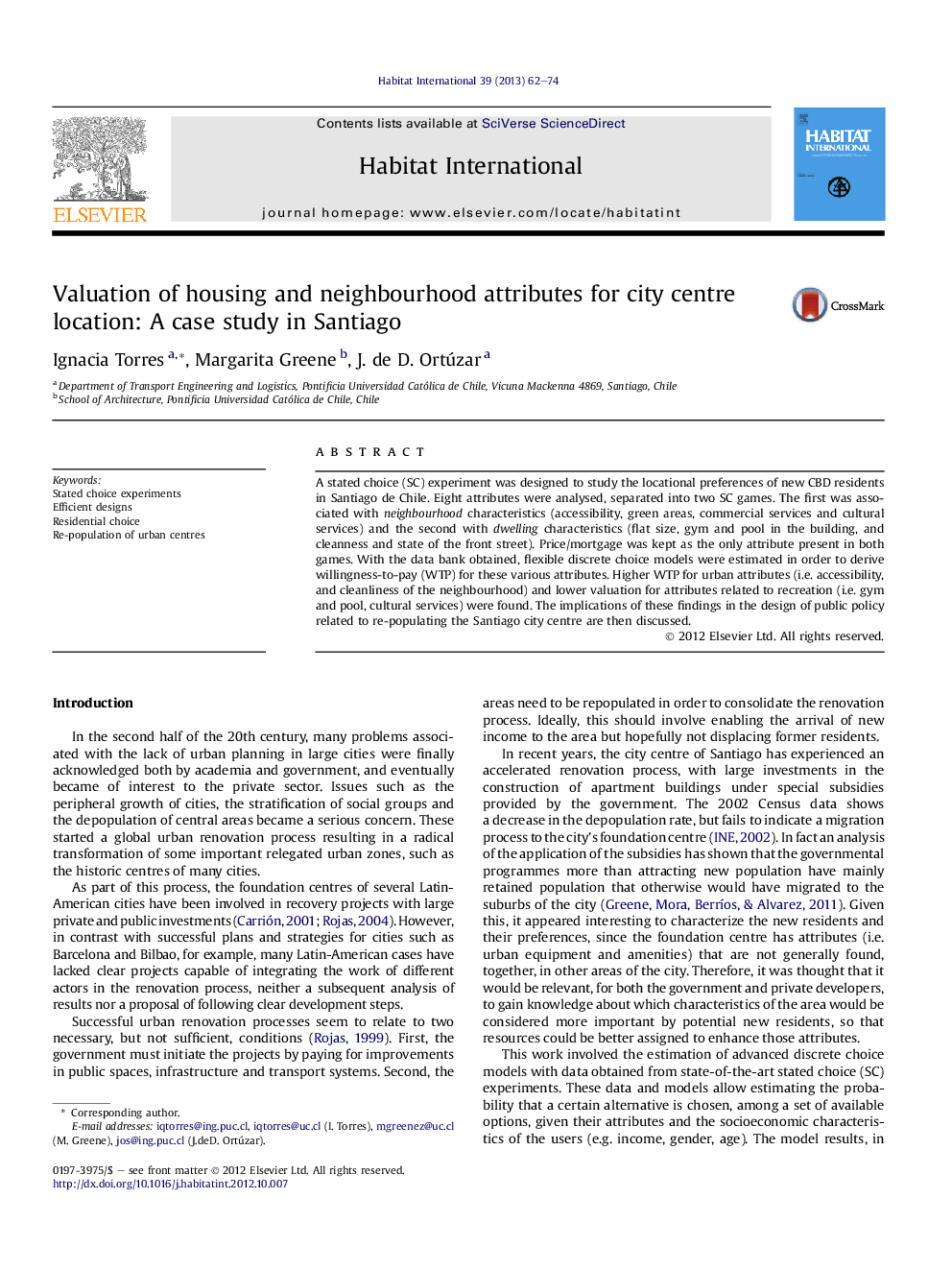| Article ID | Journal | Published Year | Pages | File Type |
|---|---|---|---|---|
| 1048224 | Habitat International | 2013 | 13 Pages |
A stated choice (SC) experiment was designed to study the locational preferences of new CBD residents in Santiago de Chile. Eight attributes were analysed, separated into two SC games. The first was associated with neighbourhood characteristics (accessibility, green areas, commercial services and cultural services) and the second with dwelling characteristics (flat size, gym and pool in the building, and cleanness and state of the front street). Price/mortgage was kept as the only attribute present in both games. With the data bank obtained, flexible discrete choice models were estimated in order to derive willingness-to-pay (WTP) for these various attributes. Higher WTP for urban attributes (i.e. accessibility, and cleanliness of the neighbourhood) and lower valuation for attributes related to recreation (i.e. gym and pool, cultural services) were found. The implications of these findings in the design of public policy related to re-populating the Santiago city centre are then discussed.
► A survey was designed for potential Santiago CBD residents. ► It was based on attributes found relevant to explain their location behaviour. ► Urban related attributes have a higher willingness-to-pay than recreational ones. ► Some of the unique characteristics of the city centre are not valued by its new residents.
